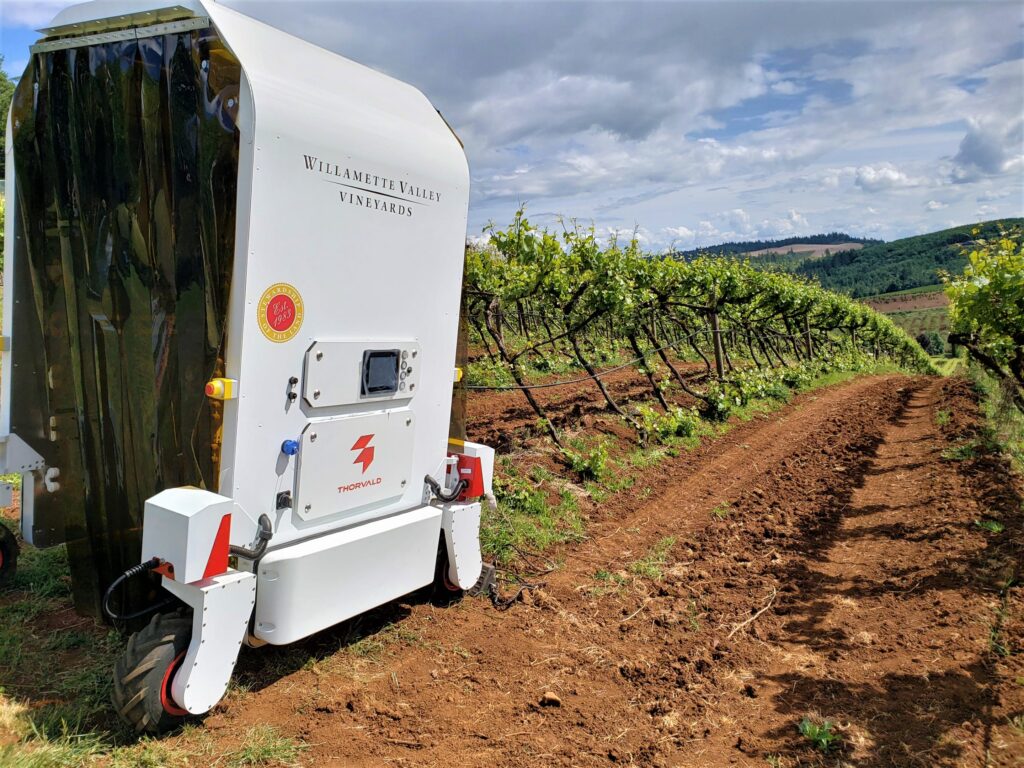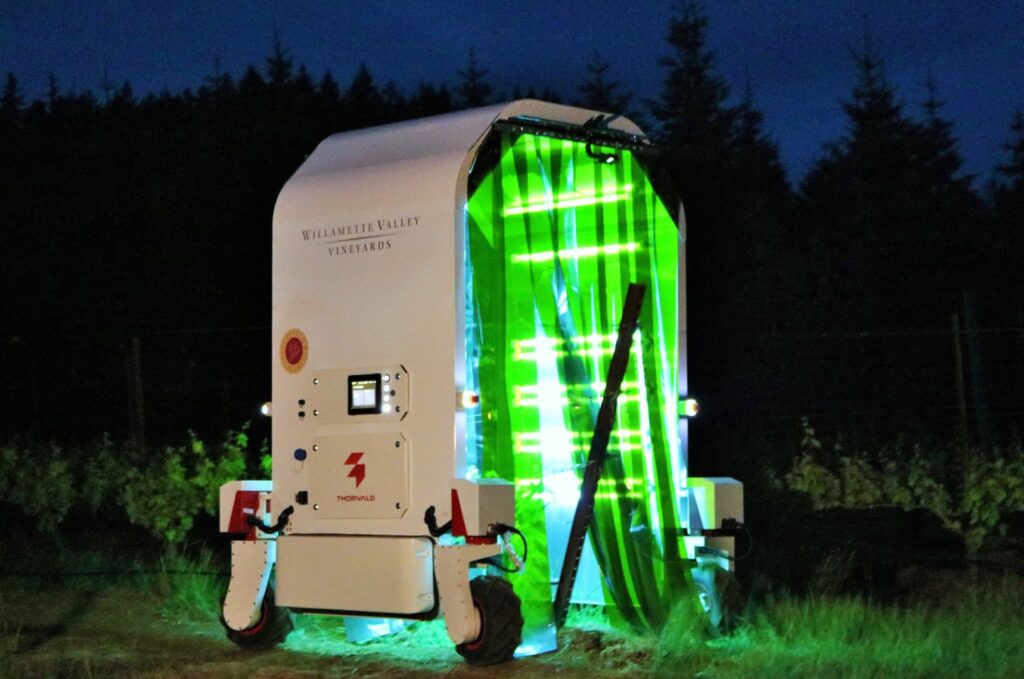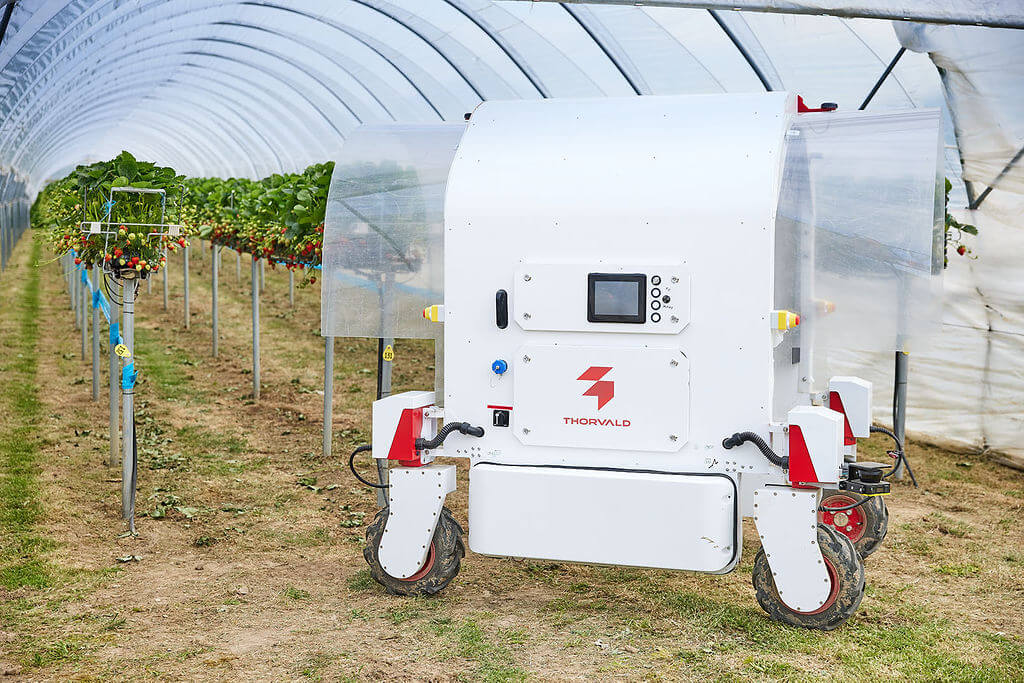Thorvald controlling powdery mildew in vineyards
Plant diseases in vineyards are a big deal. Instead of applying evermore frequent and ever-higher doses of chemicals, some growers have ‘seen the UV-C light’ and are instead using Thorvald to apply ultra-violet light to better control the problem.
Willamette Valley Vineyards, Oregon
For Willamette Valley Vineyards in Oregon, this has meant it is now able to prevent powdery mildew from damaging its prised grapes by replacing its use of organic sulphur with sustainable UV-C light and to do so more efficiently and at lower cost.
Combating powdery mildew
Willamette Valley Vineyards (www.wvv.com) has teamed up with the USDA, Cornell University, Oregon State University and Saga Robotics to introduce new ultraviolet light technology in its vineyards to combat powdery mildew. Using an autonomous robot to apply a special band of ultraviolet light, UV-C, treatment to the vines, Willamette will be the first farmer to prevent powdery mildew from damaging its prised wine grapes by replacing its use of organic sulphur with sustainable UV-C light.
Chemical-free, autonomous protection of grapevines
Powdery mildew is one of the most widespread and easily recognised plant diseases — from home gardens to just about every agriculture operation across the globe. In the U.S. alone, more than 100 million pounds of chemical fungicides are used each year to combat the disease. The major pathogen, powdery mildew, is now developing chemical resistance in U.S. agriculture and requires more frequent and higher doses of chemicals. If not controlled, powdery mildew can reduce crop yield by up to 45% and negatively affect wine quality by increasing berry acidity and reducing anthocyanins.
The UV-C light treatment is delivered at low speeds at night when the powdery mildew defences are dormant, making human-controlled tractor application inefficient and costly. Saga Robotics developed an electric powered robot for chemical-free, autonomous protection of grapevines.
Last year, the winery installed UV-C light in its HVAC systems to combat the Coronavirus with technology developed by NASA for the International Space Station. Willamette Valley Vineyards Founder Jim Bernau’s research into the technology led him to the innovative work at Cornell and Oregon State Universities. He offered the winery’s resources to further develop the technology and prove its effectiveness in commercial practice.
"The pandemic and the need to kill the Coronavirus led us to study UV-C light," Bernau said. "We learned it can be used to kill viruses and other things like powdery mildew — naturally, without the use of chemicals. We see this as a remarkable opportunity for our industry to grow high quality wine grapes and do it in a very natural, sustainable way."
David Markel, Research and Development Manager at Willamette Valley Vineyards, has been constructing the machine from Saga Robotics, based in Norway, since April. To date, the robot has only been tested at university trial sites.
This new UV-C light technology could greatly reduce global agricultural use of fungicides if farmers adopt this technology.


